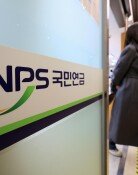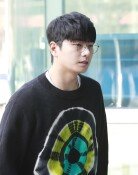The rise of humanoid robots with ‘Physical AI’
The rise of humanoid robots with ‘Physical AI’
Posted February. 12, 2025 07:39,
Updated February. 12, 2025 07:39
In director James Cameron’s 1984 sci-fi classic ‘The Terminator,’ an unstoppable humanoid robot known as the T-800 is sent back in time by Skynet, a future artificial intelligence system, to alter the past and wipe out humanity after waging nuclear war.
Portrayed by bodybuilder-turned-actor Arnold Schwarzenegger, the Terminator’s imposing physicality—muscular, clad in leather, and wearing dark sunglasses—was as terrifying as iconic. In the film’s timeline, the T-800 travels back from 2029—a date now just four years away.
That future may not be far off when humanity is faced with a legion of humanoid robots armed with monstrous physicality like the Terminator as the advancement of AI is rapidly moving beyond the digital realm into the physical world. At CES 2025 in Las Vegas last month, NVIDIA CEO Jensen Huang declared, “The ChatGPT moment for robots is coming,” signaling the dawn of an era he dubbed ‘Physical AI’.
Physical AI refers to AI systems embedded in real-world hardware—such as humanoid robots and autonomous vehicles—that can perceive their environment, make independent decisions, and be utilized in physical environments. While earlier humanoid robots, despite their resemblance to human beings, were limited to walking or performing basic tasks, physical AI enables them to interact with their surroundings, generate and accumulate data, and evolve over time.
Humanoid robots are already making inroads into industries worldwide. Automakers such as Tesla and BMW have integrated them into production lines for selecting, transporting, and inspecting auto parts. Last May, Tesla deployed two of its in-house-developed ‘Optimus’ robots in a pilot program at its factory, and this year, the company plans to ramp up production to as many as 10,000 units, with an ambitious goal of scaling that tenfold each year—potentially reaching 100,000 units per month by 2027. If realized, a vast workforce of humanoid robots could begin replacing human laborers in manufacturing within the next two years.
Tesla CEO Elon Musk underscored the economic impact of this shift during a recent earnings call, predicting that “once annual production exceeds one million units, the cost per Optimus robot could drop below $20,000.” He described the humanoid robot industry as having over $10 trillion in revenue potential.
Following its disruptive launch of the low-cost AI model ‘DeepSeek shock,’ China is experiencing what some call a ‘Unitree moment.’ Chinese robotics firm Unitree recently introduced the ‘G1,’ priced at just $16,000, yet capable of running at speeds of two meters per second and executing complex tasks such as welding and flipping a frying pan. Last month, China Central Television (CCTV) showcased 16 of Unitree’s earlier ‘H1’ robots performing a synchronized dance with 16 human performers at the annual Lunar New Year Gala, drawing widespread attention.







